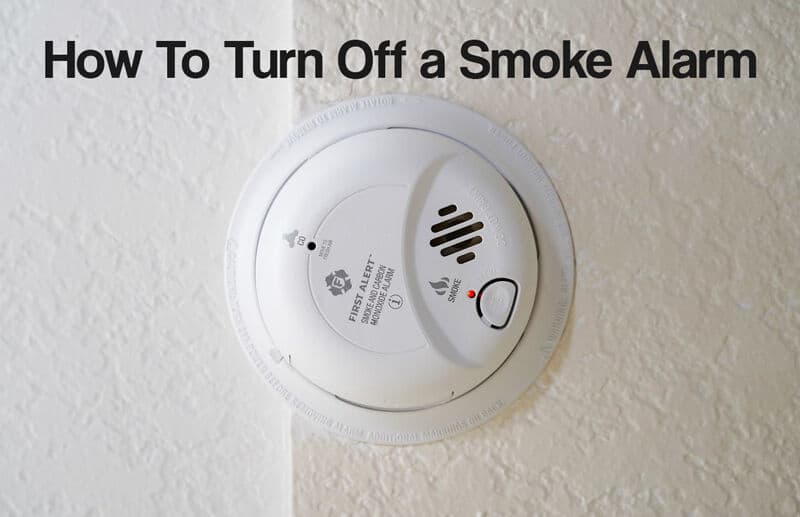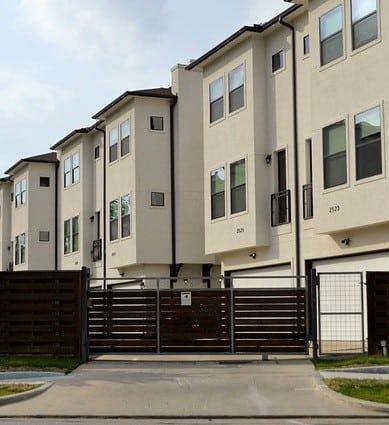How to Turn Off a Smoke Alarm: A Step-by-Step Guide
Smoke alarms are a crucial component of home safety. They alert us to potential fire hazards and give us time to evacuate in case of an emergency. However, we all know how frustrating it can be when the smoke alarm goes off due to burnt toast or a steamy shower.
In this article, we will provide a step-by-step guide on how to turn off a smoke alarm and silence those annoying beeps.

Understanding Your Smoke Alarm
Before we dive into the steps, it is important to understand the type of smoke alarm you have. There are two main types of smoke alarms: ionization and photoelectric. Ionization smoke alarms detect flames, while photoelectric smoke alarms detect smoke. Some smoke alarms even have both types of sensors, providing a greater level of protection.
Step 1: Identify Which Smoke Alarm is Beeping
When a smoke alarm goes off, it is important to identify which one is beeping. This will help you narrow down the source of the problem and troubleshoot more effectively. Start by walking around your home and listening for the beep. If you cannot locate the beeping alarm, try standing directly underneath each smoke alarm and listening for the beep.
Step 2: Check for Smoke or Fire
If you have identified the source of the beeping and it is not a false alarm, check for smoke or fire. If there is smoke or fire, evacuate the premises immediately and call 911. Do not attempt to turn off the smoke alarm if there is an actual fire.
Step 3: Find the Reset Button
Once you have confirmed that there is no smoke or fire, locate the reset button on the smoke alarm. The reset button is typically located in the center of the smoke alarm and may be labeled as “reset” or “silence.”
Step 4: Press and Hold the Reset Button
Press and hold the reset button for at least 15 seconds. This should silence the alarm. If the alarm continues to beep after 15 seconds, release the reset button and press it again for an additional 15 seconds.
Step 5: Test the Smoke Alarm
After silencing the alarm, it is important to test the smoke alarm to ensure it is functioning properly. Press and hold the test button on the smoke alarm until you hear a loud beep. If the alarm sounds, it is functioning properly.
Step 6: Change the Batteries
If the smoke alarm continues to beep after you have silenced it, the batteries may need to be changed. Smoke alarms typically require 9-volt batteries or AA batteries. Replace the batteries and test the smoke alarm again to ensure it is functioning properly.
Step 7: Clean the Smoke Alarm
If the smoke alarm continues to beep after replacing the batteries, it may be dirty. Dust and debris can interfere with the sensors and cause false alarms. Clean the smoke alarm with a soft brush or vacuum cleaner to remove any dust or debris.
Step 8: Call a Professional
If the smoke alarm continues to beep after cleaning and replacing the batteries, it may be a faulty smoke alarm. Call a professional to inspect and replace the smoke alarm if necessary.
Conclusion
Smoke alarms are an essential component of home safety, but they can be frustrating when they go off due to false alarms. By following these simple steps, you can turn off a smoke alarm and silence those annoying beeps. Remember to always test your smoke alarms regularly and replace the batteries at least once a year to ensure they are functioning properly.
FAQs
What causes false alarms on smoke alarms?
False alarms can be caused by steam from a shower, burnt toast, or dust and debris interfering with the sensors of the smoke alarm.
Can I turn off a smoke alarm permanently?
No, you should not turn off a smoke alarm permanently as it is a crucial component of home safety. If you are experiencing frequent false alarms, you may want to consider upgrading to a newer model or having a professional inspect your smoke alarms.
How often should I test my smoke alarms?
You should test your smoke alarms at least once a month to ensure they are functioning properly.
When should I replace my smoke alarms?
Smoke alarms should be replaced every 10 years, or sooner if they are malfunctioning or not functioning at all.
Can I install a smoke alarm myself?
Yes, you can install a smoke alarm yourself, but it is recommended to have a professional install it to ensure it is installed correctly and functioning properly.
Other articles you might like:
Best Wireless Security Camera System
Best Hidden Security Cameras for Indoor and Outdoor Use






